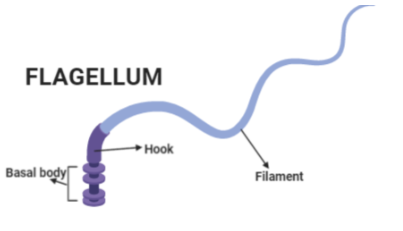Question
Question: Match the following. Identify the correct match between Set-I and Set-II. Set-I| Set-II ---|--...
Match the following. Identify the correct match between Set-I and Set-II.
| Set-I | Set-II |
|---|---|
| A) Stichonematic | I) Flagellum has two or more rows of lateral appendages |
| B) Pantonematic | II) Flagellum has no lateral appendages and terminal filament |
| C) Acronematic | III) Flagellum bears one row of lateral appendages |
| D) Anematic | IV) Flagellum does not lateral appendages and terminal part of the acroneme is naked |
A. A-III, B-I, C-IV-D-II
B. A-IV, B-I, C-III-D-II
C. A-III, B-II, C-IV-D-I
D. A-II, B-I, C-III-D-IV
Solution
There are different types of flagella. For example, stichonematic flagella is present in euglena and they have only one-row mastigonemes.
Step by step answer:
Flagella are the microscopic hair-like structures that are involved in the locomotion of a cell. The flagella have whip-like appearances that help a cell to move through the liquid. Some special flagella are used in a few organisms as sensory organs which can sense changes in pH and temperature of the surroundings. Flagella have the small hair-like structures which are called mastigonemes. There are different types of flagella.
-If the flagella have mastigonemes on only one side or row, then they are called stichonematic flagella. Such a type of flagella is found in euglena.
-If flagella have two rows of mastigonemes, then they are called pantonematic flagella.
-If there are no mastigonemes present in flagella, then they are called acronematic flagella. This type of flagella is found in Chlamydomonas.
-If there are no mastigonemes and the distal ends of the flagella end as a naked, axial filament, then they are called anemic. Such a type of flagella is found in cryptomonas.
So, the correct option is option A
| Set-I | Set-II |
|---|---|
| A) Stichonematic | III) Flagellum bears one row of lateral appendages |
| B) Pantonematic | I) Flagellum has two or more rows of lateral appendages |
| C) Acronematic | IV) Flagellum does not lateral appendages and the terminal part of the acroneme is naked |
| D) Anematic | II) Flagellum has no lateral appendages and terminal filament |
Note: The flagella possess a helical structure composed of a protein called flagellin. The flagella structure comprises three parts: basal body, hook, and filament. Each has its own function.

